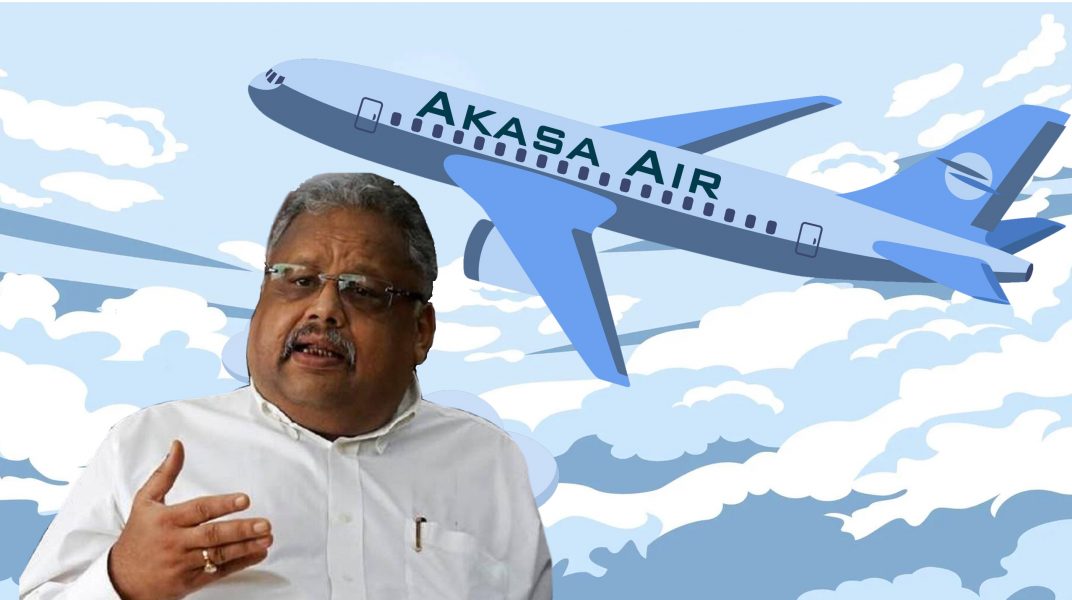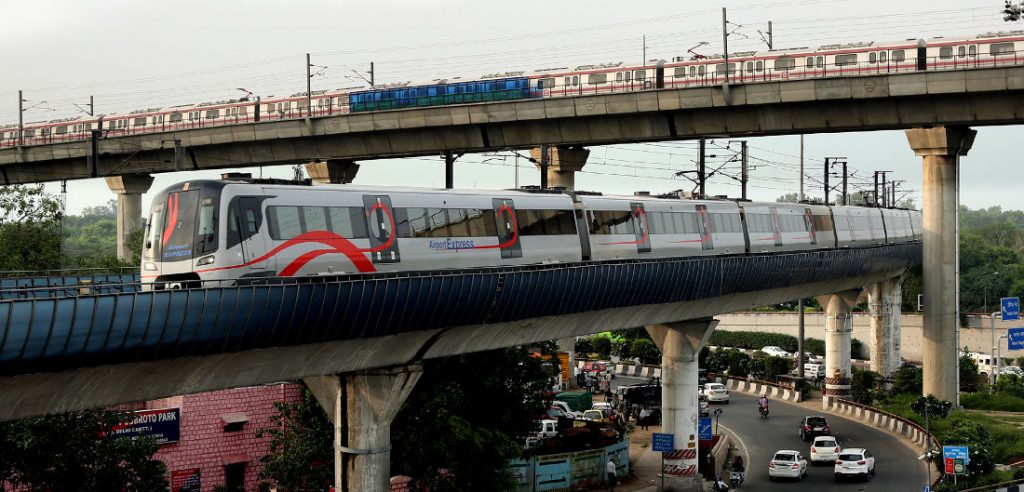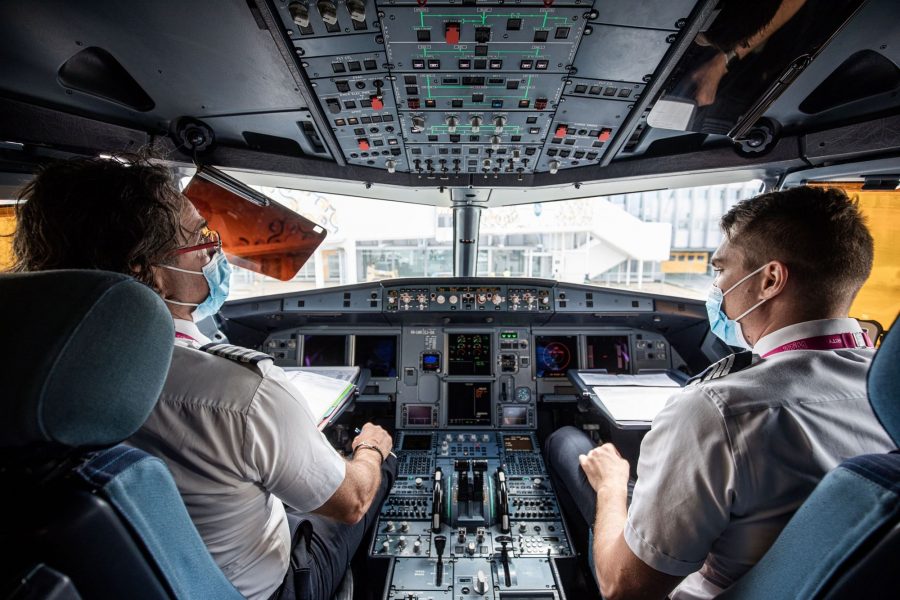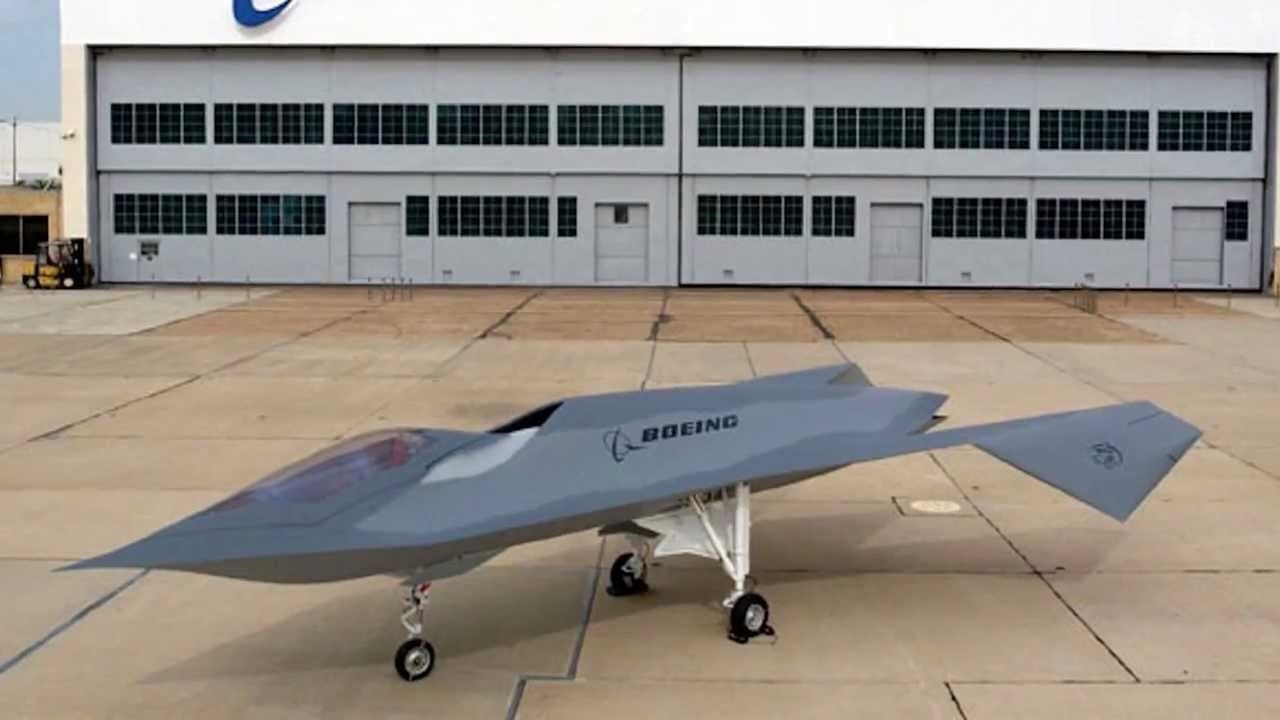Rakesh Jhunjhunwala claims to have a strategy for Akasa Air and the aviation industry
Radhika Bansal
18 Feb 2022

Veteran stock market investor Rakesh Jhunjhunwala was in a defiant mood as he laid down the gauntlet to the sceptics of his multi-million dollar investment in airline Akasa Air is expected to start operations later this year.
“I am prepared for failure. I am surprised that people are surprised (by my investment),” said Jhunjhunwala, who was speaking at a Confederation of Indian Industry (CII) event on February 17.
The marquee investor has invested INR 275 crore for a 40% stake in Akasa Air to build a new airline from the ground up in partnership with some other veterans of the Indian aviation industry.
Rakesh Jhunjhunwala claims to have a strategy for Akasa Air and the aviation industry
Stock market investor Rakesh Jhunjhunwala on Thursday said he is investing USD 50 million in the new airline Akasa Air and got a game plan for the Indian aviation sector.
"I was telling Tata Sons chairman N Chandrasekaran that you are investing Rs 18,000 crore in Air India and we are investing USD 50 million in Akasa Air, hope I am not living in a pipe dream," he said.
Sceptics have raised questions over Jhunjhunwala’s foray into the space given the history of failed airlines in India and the low returns the sector has made globally. The development had drawn a myriad of responses on social media networks in India with the majority confounded by Jhunjhunwala’s decision to start an airliner.
Responding to the critics of his airline venture, Jhunjhunwala said he hopes to prove them wrong as he proved his family wrong when he entered the Indian stock market more than three decades ago. “Now it is a matter of ego,” the renowned investor said.
Jhunjhunwala sees his airline venture as being ‘frugal’ instead of ‘ultra-low cost’ and drew an analogy with European airline Ryanair to give a peek into his business plan. “I think I have got a business plan and you know Ryan Air was profitable from day one when other European airliners shut down,” Jhunjhunwala said.
Akasa Air has ordered one-fourth of the planes that current industry leader IndiGo has in its fleet
Jhunjhunwala’s foray into the segment comes amid one of the toughest times in the history of aviation because of the COVID-19 pandemic. “I think aviation in India is going to grow from where it is today, and in an industry where everyone is losing money pricing has to improve,” he said.
Jhunjhunwala said that Akasa Air has ordered one-fourth of the planes that current industry leader IndiGo has in its fleet. Media reports have suggested that the infant airliner is luring staff from rivals with stocks options and other incentives.
Backed by aviation veterans Vinay Dube and Aditya Ghosh, Akasa Air had in October 2021 got the no-objection certificate from the ministry of civil aviation to operate commercial flights.
Akasa Air will have services from metros to Tier II and III cities.
To begin with, Akasa Air will have services from metros to Tier II and III cities. There will also be flights from metros to metros so that the aircraft is moved around the system, CEO Vinay Dube said.
"We hope to get our first aircraft in the second half of April, the first commercial flight in late May or early June... we are working with the government, DGCA to go through all of the requirements that are there," Dube said.
Dube, who is also the founder and managing director, said the airline has started hiring people, setting up technology, creating processes and procedures, defining things related to customer value and proposition and planning route networks with airports. Currently, the carrier has more than 50 staff.
Read next
A proposal has been sent to the Union government for renaming 13 airports, including the one in Aurangabad, and a decision on the same will be taken by the cabinet, Union Minister Dr Bhagwat Karad said.
Speaking to reporters after arriving in Maharashtra’s Aurangabad city on Wednesday, February 16 the Union minister of state for finance said a proposal to rename the airport after Maratha king Chhatrapati Sambhaji was sent to the Centre earlier.
“I have been regularly following up on the issue. At least 13 airports in the country are to be renamed and the cabinet will make a decision about these airports,” Dr Karad said.
Dr Bhagwat Karad, Union Minister of State, Ministry of Finance
Earlier, while speaking at a virtual inauguration ceremony of an establishment in Aurangabad, Chief Minister Uddhav Thackeray had said that legislators who go to Delhi should pursue the matter of renaming the airport and get it done.
A few days ago, the Minister of Civil Aviation Jyotiraditya M. Scindia in a written reply to a question in the Parliament said the government has accorded ‘in-principle’ approval for setting up a total of 21 Greenfield Airports.
This includes Mopa in Goa; Shirdi, Sindhudurg, Navi Mumbai in Maharashtra; Kalaburagi, Hassan, Bijapur and Shimoga in Karnataka; Datia (Gwalior) in MP; Noida and Kushinagar in UP; Hirasar and Dholera in Gujarat; Karaikal in Puducherry; Bhogapuram, Dagadarthi and Oravakal in Andhra Pradesh; Pakyong in Sikkim; Durgapur in WB, Kannur in Kerala and Hollongi (Itanagar) in Arunachal Pradesh.
Kushinagar International Airport
The airports accorded approval at Navi Mumbai, Mopa, Shirdi, Noida (Jewar), Hirasar, Dholera, Kannur, Bhogapuram and Kushinagar are international airports and the rest of them are domestic airports.
Out of these 21 airports, eight airports- Pakyong, Durgapur, Sindhudurg, Shirdi, Kannur, Oravakal, Kalaburagi and Kushinagar have already been operationalized.
Read next
Amritsar-bound Vistara flight rerouted to Delhi airport due to technical issue
Radhika Bansal
18 Feb 2022
A Vistara Airbus 320 with 152 people onboard returned safely to Delhi on Thursday, February 17 shortly after taking off for Amritsar due to a technical snag in the aircraft. The A320neo (VT-TNI) was operating as UK-697 when pilots got an alert for a hydraulic snag (yellow low-level indication).
Airline sources said the glitch was detected within half an hour of the flight taking off and the pilot immediately requested that the flight be granted priority landing at the Delhi airport.
Amritsar-bound Vistara flight rerouted to Delhi airport due to technical issue
A call was also received by the Delhi Police at 10:15 AM about the flight being turned around for an emergency landing, and the fire brigade was also put on standby as a precautionary measure.
As a precautionary measure, they decided to return to Delhi — the airline’s engineering base where rectification will be swifter — than to continue operating to nearby Amritsar. The plane landed safely at IGI Airport.
There were 146 passengers and six crew members onboard the aircraft.
“A technical snag was detected on Vistara flight UK 697 operating Delhi to Amritsar on February 17, 2022. As a precautionary step, the pilots decided to turn back and landed safely at IGI Airport. Another aircraft was immediately arranged to fly the passengers to Amritsar which took off at 1:30 PM post a technical inspection. Inconvenience to passengers is deeply regretted. Safety of our customers and staff is our top priority.” Spokesperson, Vistara
There were 146 passengers and six crew members onboard the aircraft.
Read next
Developed by McDonnell Douglas and Boeing in the 1990s, the "Boeing Bird of Prey" was a "Black Project" aircraft. Characterized as a demonstrator aircraft for stealth technology, it was never really intended for mass production.
Wikipedia
The aircraft's name is a reference to the Klingon Bird of Prey warship from the Star Trek television series.
Klingon Bird of Prey | Representative | Memory Alpha-Fandom
A low-cost program compared to many other programs of a similar scale, the demonstrator was not given an "X-plane" designation since it was majorly an internal project.
Although the YF-118 was never made into a fighter craft for the US Air Force, it did have a profound impact in the course of aviation history in more ways than one.
Developed by a team of engineers from McDonnell Douglas’ Phantom Works, the "Bird of prey" took off from a paper design to the skies for less than the cost of an F-35 today.
F 35 Lightning II | Airforce Technology
YF-118G: A Secret Pioneer of Stealth Aviation
A brief history
Based on the Have Blue technology demonstrator, the Lockheed F-117 Nighthawk secretly entered service in October of 1983, thereby proclaiming the arrival of the world's first stealth aircraft. Although designated with the prefix "F' normally assigned for fighters and widely known as a "stealth fighter", this aircraft was no fighter really. The F-117 was essentially a ground-attack aircraft disguised as a fighter-an attack aircraft, unlike anything the world had ever seen.
F-117 Nighthawk | Wikipedia
Although slow and cumbersome compared to the F-15s and F-16s, the Nighthawk was instrumental in the future development of aviation technology and air warfare doctrine among the world’s most powerful nations. For an aircraft that carried a radar cross-section of only slightly more than a tenth of an inch (0.11 inches), the F-117 was practically invisible to enemy radars.
The Northrop YF-23 would go on to compete with Lockheed's YF-22 and would eventually result in, what is now known as the "YF-118G"- the world’s first true stealth fighter.
Design and development
The Boeing Bird of Prey development commenced in 1992 at McDonnell Douglas's Phantom Works in the secrecy of Area 51, spearheaded by Alan Wiechman. Now Wiechman's name doesn't pop as often as you'd expect in the annals of aviation history when compared to other legendary engineers of the day. Nevertheless, his contributions to aviation stealth technology cannot be understated and he also received the Technical Achievement Award from the National Defense Industrial Association (NDIA) for his work in Low Observable aircraft design before the Bird of Prey was even declassified.
Alan Wiechman | Aviation Week
Tech and Specs
Because it was a demonstration aircraft, Wiechman and his team weren’t set on building the entire aircraft from scratch. Various parts and components came from here and there, for instance, the ejection seat came from an AV-8B Harrier, the control stick and throttle from a F/A-18 Hornet, and the rudder pedals came from an A-4 Skyhawk. The landing gear was adapted from Beech King Air and Queen Air aircraft.
It featured a commercial off-the-shelf Pratt & Whitney JT15D-5C turbofan engine, which produced just 3,190 pounds of thrust.
Pratt and Whitney JT15D-5C turbofan | Representative | Frontiers of Flight Museum
The clock was from Wal-Mart and the environmental control system was essentially a hairdryerAir Force Test pilot Colonel Doug Benjamin joked at the time
Colonel Doug Benjamin | The Society of Experimental Test Pilots
Crew1Length46 ft 8 in (14.22 m)Height9 ft 3 in (2.82 m)Wing-area (estimated)220 sq ft (20.4 m2) Maximum Take-off weight7,400 lb (3,356 kg)Service Ceiling20,000 ft Wikipedia
The aircraft was aerodynamically sound enough to fly entirely on manual hydraulics without the implementation of Fly-By-Wire.
With a cruising speed of only around 300 miles per hour, the stealthy aircraft was slower than a C-130 Hercules and its maximum operational ceiling of 20,000 feet meant it could fly less than half as high as a P-51 Mustang from World War II.
P-51 Mustang | Representative | Auto Evolution
The design took a holistic approach to stealth, reducing radar, infrared, visual, and acoustic signatures through its shape, the use of flexible or movable covers to conceal gaps, and by burying its engine deep within the fuselage behind a curved inlet duct and in front of an infrared and acoustic defusing exhaust outlet.
The Bird of Prey was designed to prevent shadows and is believed to also have tested "camouflage"- a phenomenon that involved changing its surface colour to match with that of its surroundings.
The aircraft made its maiden flight in 1996 and 39 more flights were performed through the program's conclusion in 1999.
Early investments in technology demonstration projects such as Bird of Prey have positioned Boeing to help shape our industry’s transformation. We changed the rules on how to design and build an aircraftJim Albaugh, President and CEO, Boeing Integrated Defense Systems, said in 2002
Although not frequently discussed in the present age, there are no platforms today which can be directly traced back to Boeing's Bird of Prey lineage.
That said, the only place where you'll get to see a live model is at the National Museum of the United States Air Force at Wright-Patterson Air Force Base, where Boeing donated the sole YF-118G Bird of Prey in 2003, where it is placed right above the museum's F-22 Raptor.
Air Data News
SOURCE(s)
COVER: The National Interest
Read next
Metro routes proposed between Noida Airport and Delhi's IGI Airport by DMRC
Radhika Bansal
17 Feb 2022

The Delhi Metro Rail Corporation (DMRC) has proposed a 72km high-speed corridor between the upcoming Noida airport in Jewar and Delhi’s IGI airport. The metro connectivity will be built in two phases and will have 13 stations in total between Jewar and New Delhi railway stations.
The corridor will then connect with Delhi’s Airport Express line to reach IGI. In a presentation to officials of the Yamuna Expressway Industrial Development Authority (YEIDA) on Monday, February 14 a DMRC team said the first phase — 35km long — will have both underground and elevated portions and will connect Knowledge Park 2 on the Aqua Line with the Noida airport.
Metro routes proposed between Noida Airport and Delhi's IGI Airport by DMRC
This independent corridor will have an interchange at Knowledge Park 2 and there will be seven stations between them. DMRC is likely to submit the detailed project report by March 31 and follow it up with a feasibility study of the second phase of the metro link.
The second phase, sources said, was likely to be around 37km long and would span from Knowledge Park 2 to New Delhi railway station. The route is likely to run parallel to the Noida expressway and will have stations at New Ashok Nagar and Yamuna Bank.
“On Tuesday, February 15 DMRC gave a presentation of their proposal to connect Noida airport with Delhi’s IGI. The entire corridor will be 72km long. The first phase will be built from Jewar to Knowledge Park 2 and the second from Knowledge Park 2 to New Delhi railway station. The DPR for the first phase is likely to be ready by March 31.” Arun Vir Singh, CEO, Yamuna Expressway Industrial Development Authority (YEIDA)
According to the sources, the 35km first phase of the corridor will cost around INR 5,000 crore. “There will be seven stations in the first phase. The tentative ones could be Techzone, Salarpur Underpass, and sectors 18 and 20 of the Yamuna Expressway apart from Noida airport and Knowledge Park 2. The final numbers will be known only when the DPR is ready,” a source said.
Trains on this route will hurtle down faster than on the usual metro lines and it could take around an hour to cover the distance between the two airports, with the interchanges in between.
Noida International Airport in Jewar is under construction and would be the largest in India on completion. It will also be the first airport with net-zero emissions. The airport is planned across 1,334 hectares at Jewar.
Strategically, the airport will be located 72km from Delhi IGI airport, 52km from Noida, 90km from Multi-modal Logistics Hub at Dadri and 130km from Agra. Prime Minister Narendra Modi laid the airport’s foundation stone in November 2021.
YEIDA is the implementation agency of the project in coordination with the Uttar Pradesh government. The project is progressing in four phases, and the first phase is expected to complete by September 2024.
Read next
As the pandemic drags on, a third of airline pilots are still unable to fly
Radhika Bansal
17 Feb 2022

Despite an improvement from the situation a year earlier when the majority of airline pilots were grounded, a new survey shows that more than a third of airline pilots are staying grounded as the pandemic continues to affect aviation globally.
FlightGlobal and UK-based GOOSE Recruitment surveyed more than 1700 pilots, which found that 62% were employed and currently flying, up from 43% a year earlier. With air traffic beginning to rebound after 2020's lows, the number of unemployed pilots decreased from 30% to 20%, while 6% of pilots were on furlough, compared with 17% previously.
As the pandemic drags on, a third of airline pilots are still unable to fly
As a result of tough border restrictions, international travel has dropped most in the Asia-Pacific region, and the unemployment rate has risen from 23% to 25%. 53% of workers in the region were employed as pilots.
"We have ... seen some expatriates return home from the region due to concerns over quarantine or being stuck for long periods away from friends and family," the report on the survey said. In the aftermath of the pandemic, Hong Kong's Cathay Pacific Airways has lost hundreds of pilots, including the closure of Cathay Dragon, a regional airline owned by the airline.
Among the pilots still flying internationally, 61% expressed concern about their job security.
There has also been a rise in pilot attrition at Cathay Pacific, thanks to strict layover rules that keep crews in hotels when they are not flying. Among the pilots still flying internationally, 61% expressed concern about their job security.
"It appears only Northern America is back to post-Covid passenger numbers," said an unnamed captain flying in the Middle East and Africa. "The rest of the world, especially developing nations, are still struggling to get vaccines, and are still not travelling."
(With Inputs from Reuters)




Comment